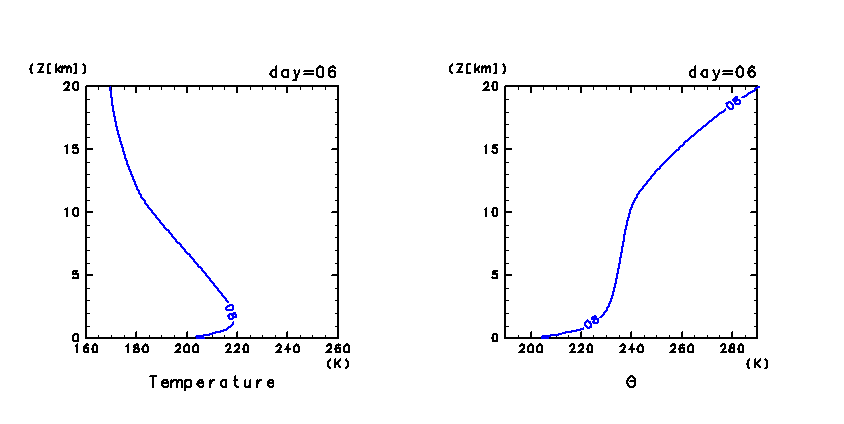|
3.a. Diurnal change of horizontal mean fields
|
Figure 3a shows the
diurnal changes of horizontal mean
temperature and potential temperature
of the dust-free case.
In the daytime,
there appears a layer where potential temperature is
vertically uniform.
This is the region where convective flux is dominant
in the heat transport;
hereafter, we refer to this layer as the convection
layer.
The height of the convection layer increases rapidly
as the extinction of the inversion layer which forms
during the nighttime;
it reaches the maximum height of about 10 km at LT = 16:00.
Near the ground surface, there appears a thermal boundary
layer characterized by the unstable potential temperature
profile.
During the night, an intense inversion layer develops
below the height of 2 km,
which is produced by infrared radiative cooling.
In the stably stratified region above the height of 10 km
(hereafter, referred to as the stratosphere),
the diurnal variation of the horizontal mean potential
temperature is about 2 K.
The increase of stratospheric temperature in the daytime is
caused by near infrared radiative heating
of CO2.
The depth of the convection layer in daytime shown in
Figure 3a
is about 1 km larger than
that of the 1D model obtained by
Pollack et
al.(1979)
under the same seasonal and latitudinal conditions.
This difference is caused by the
explicit representation of the penetration of
convective plumes to the stratosphere.
At nighttime, the vertical profile of horizontal mean
temperature coincide with that of
Pollack et al.
(1979).

|
|
Figure 3a:
Time development of the vertical profiles of horizontal mean
temperature (left panel) and potential temperature (right
panel) of the dust-free case.
Profiles are for every 4 hours from LT = 8:00
of the sixth day.
|
Diurnal change of other horizontal mean fields:
|